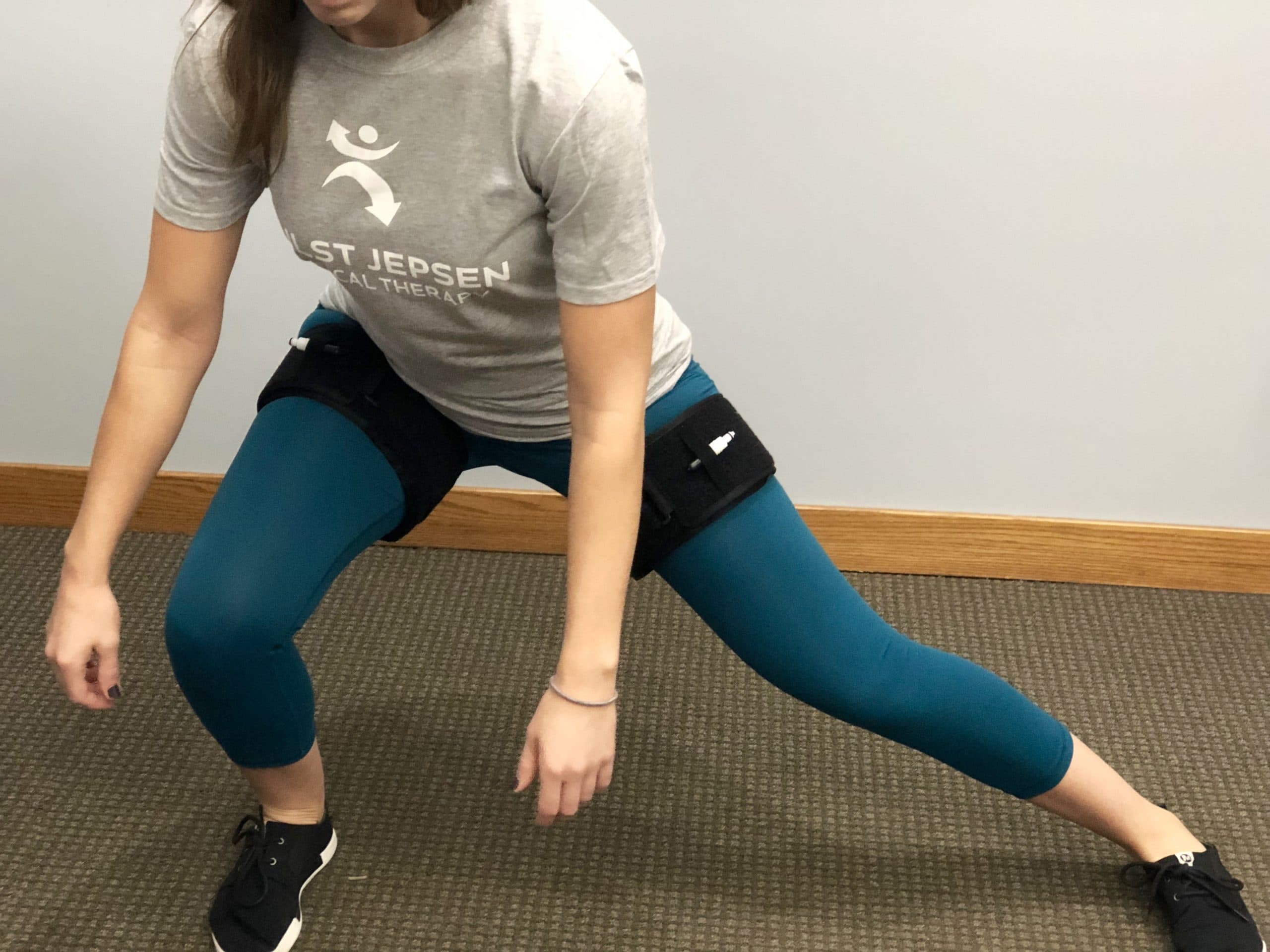What is Blood Flow Restriction Therapy?
“You want to do what to my leg?”
“That sounds like it might hurt!”
These are the two most common responses I receive when I propose Blood Flow Restriction Therapy (BFRT) to my patients. BFRT is the brief and intermittent occlusion or restriction of arterial and venous blood flow that is performed by applying a tourniquet to the upper or lower extremity. Again, what? To make it simple, it’s cutting off some or all of the blood supply to the leg or arm and preventing the return of blood for a short period of time.
Now, you may be wondering why in the world I would want to do that to my patients?
Great question. Let’s dive in:
Blood Flow Restriction Therapy (BFRT)is treatment with so many benefits! In order to understand the how and why this works, you need to know a bit about how your muscles are put together. To spare everyone a complete anatomy and physiology lecture, we will just say your muscles are made up of two types of muscle fibers; type one fibers and type two fibers. Type one fibers require oxygen (delivered by blood) and type two fibers work without oxygen. In terms of movement, type one fibers are your everyday walking around muscle fibers. As long as you aren’t too fatigued or lifting something too heavy these fibers do all the work. Type two fibers are your strength and power muscles fibers. They kick on when your type one fibers are too tired, or if you’re lifting something really heavy. This is why BFRT works. By cutting off some of the blood to the leg or arm, you can “trick” your type one fibers into shutting off by removing the oxygen (via reduced blood supply) and force the type two fibers to activate. The amazing thing about this is that you can perform light exercises that would normally only affect type one muscle fibers and instead exercise and strengthen the type two fibers.
Okay Ben, that’s a lot of information and also really cool, but I still don’t see the big deal?
Ah, yes. The big deal. BFRT allows you to get stronger and improve function quicker without putting excess stress on your joints. Patients are also encouraged to only do about 3 exercises when doing BFRT. This means you have the tourniquets on for only around 10 minutes during your training session.
I’m starting to warm up to the idea. But, does it hurt, and will I be sore after?
Ideally it should not hurt, but there will be some slight discomfort due to the compression. Most patients report they feel more tired than anything during the exercises. Some people do say they feel much better after performing the exercises, which is another reason I like BFRT. While we don’t fully understand the why yet, they have found that there is actually about a 45-60-minute window of pain reduction post BFRT session! Due to this I have had some patients who insist on doing BFRT first, then doing the rest of their exercises, saying their legs feel more refreshed after doing the exercise. Regarding soreness, a patient may experience soreness for a few hours to a day, just like with any other exercise routine. However, unlike lifting heavy weights to get stronger, which causes micro-tears in the muscle leading to soreness; BFRT does not use heavy weights and therefore no real micro-tears and no real soreness!
That’s good to hear! One last question, who can do BFRT?
Almost anyone! As long as you meet the criteria on our health screening checklist, then you are able to participate in BFRT. I most commonly perform BFRT on patients who have recently had surgery on their arms or legs, athletes, those with strains or sprains, and/or patients who want to get stronger and healthier.
To learn even more about BFRT, and other specialties we offer at Hulst Jepsen Physical Therapy, visit our website! If you’re interested in one of our free 15 minute consultations, give us a call at 616-827-3010.


